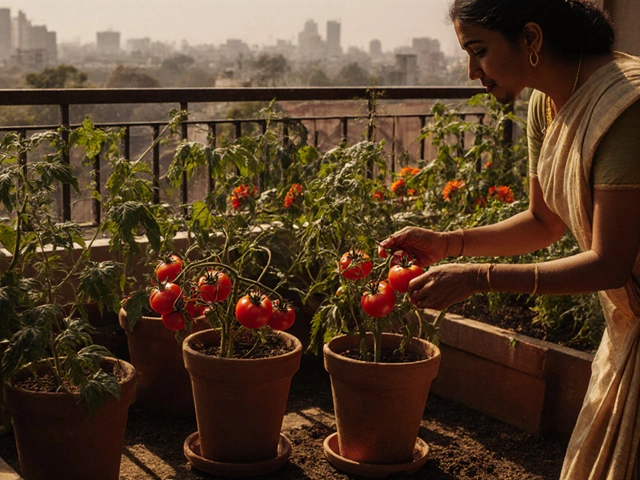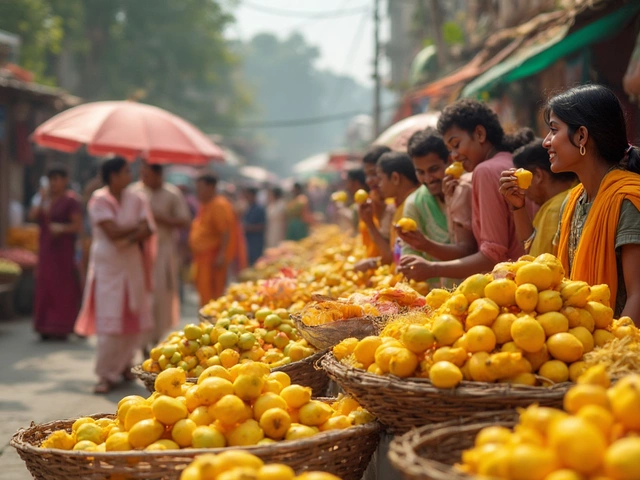Brinjal Facts: How to Grow Eggplant Successfully in India
If you’ve ever wondered why brinjal (eggplant) is a kitchen staple across India, the answer starts in the garden. It’s a warm‑weather plant that loves sunshine, well‑drained soil and a little TLC. Below you’ll find practical facts and step‑by‑step tips that make growing brinjal easy, even if you’re a first‑time gardener.
Choosing the Right Variety
India grows many brinjal types – from small round purple balls to long green “curry” varieties. Pick a type that matches your climate and cooking style. For hot, dry regions, the sturdy ‘Black Beauty’ holds up well. In humid coastal areas, the thin‑skinned ‘Mala’ or ‘Thakkali’ does great. When you buy seeds, look for certified packs to avoid mixed varieties that can confuse your garden plan.
Key Care Steps
Soil preparation: Brinjal likes loamy soil with a pH of 5.5‑6.5. Mix garden compost or well‑rotted manure into the top 6‑8 cm. This improves drainage and gives the plant a nutrient boost.
Sowing and spacing: Start seeds indoors 4‑5 weeks before the last frost. Plant them 2‑3 cm deep in seed‑starting trays. Once seedlings have 3‑4 true leaves, transplant them outside, spacing each plant 45‑60 cm apart in rows 75 cm apart. Proper spacing helps air circulate and reduces disease risk.
Watering: Keep the soil consistently moist but not soggy. Drip irrigation works best because it delivers water right to the root zone and keeps leaves dry, lowering fungal problems. In peak summer, water early in the morning to reduce evaporation.
Fertilizing: Apply a balanced NPK (10‑10‑10) fertilizer at planting, then side‑dress with nitrogen‑rich compost midway through the season. Over‑fertilizing can cause leafy growth at the expense of fruit, so stick to recommended rates.
Pest and disease control: The most common culprits are aphids, whiteflies and the dreaded fruit‑bunchy top virus. Use neem oil spray or a mild soap solution weekly to keep insects in check. For fungal issues like wilt, practice crop rotation and avoid watering the foliage.
Staking: Some large varieties need support. Insert bamboo or wooden stakes when planting and tie the main stem loosely with soft cloth strips. This prevents branches from breaking under the weight of heavy fruit.
Harvesting: Brinjal is ready when the skin is glossy and the fruit feels firm. For most Indian varieties, this is 70‑90 days after transplanting. Pick the fruit with a sharp knife to avoid damaging the plant.
After harvest, you can store brinjal in a cool, dry place for up to a week. If you have extra, try drying slices for later use or making a tasty pickle.
One quick tip that many gardeners forget: plant brinjal alongside “sister plants” like marigold or basil. These companions repel pests naturally and improve soil health. A simple three‑plant mix can boost your yield without extra chemicals.
That’s the core of brinjal facts you need to get a healthy crop. Remember, the plant thrives on warmth, good soil and steady moisture. Keep an eye on pests, give it proper support, and you’ll enjoy fresh eggplant in your kitchen all season long.
Discovering the Queen of Vegetables in India: Brinjal
In Indian vegetable gardening, brinjal, also known as eggplant, holds a special place as the 'queen of vegetables.' Celebrated for its versatility, it can be transformed into various dishes across the country's diverse cuisines. Growing brinjal requires understanding its optimal conditions, including the right soil, sunlight, and watering techniques. This article dives into the cultivation process, fun facts, and tips to make the most of this fascinating vegetable garden staple.
About
Vegetable Gardening
Latest Posts


Which Vegetable Is the King of Vegetables in India? The Real Answer for Gardeners
By Alden Thorne Nov 15, 2025

Indian God of Vegetables: Myth, Meaning, and Tips for Better Gardening
By Alden Thorne Apr 26, 2025

Drip Tape vs Drip Line: The Ultimate Guide for Efficient Watering
By Alden Thorne Jul 21, 2025

